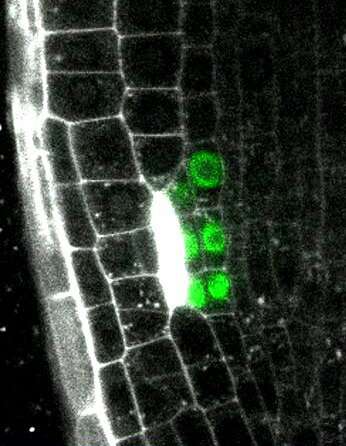If plants are injured, cells adjacent to the wound fill the gaps with their daughter cells. However, which cells divide to do the healing and how they manage to produce cells that match the cell type of the missing tissue has been unclear. Scientists from the Institute of Science and Technology Austria (IST Austria) have now shown that to correctly replace dead cells, neighbors to the inside of the wound re-activate their stem cell programs.
All plant organs—from the leaves to the root—regularly endure injuries to their tissue, whether due to mechanical forces, grazing animals, or other factors. While animals rely on specialized migrating cells for wound healing, plants, whose cells are immobile, had to evolve other mechanisms.
It has been known for almost a century that in plants, cells adjacent to the wound replace harmed tissue with new daughter cells. Yet, a completely new aspect of plant wound healing in the sensitive root tip has only recently been discovered: The research team including first authors Petra Marhava, former Ph.D. student at IST Austria, current Ph.D. student Lukas Hörmayer, and former IST postdoc Saiko Yoshida reports that injured or destroyed root cells are not simply replaced by a proliferation of healthy cells from the same cell type above and below to the wound. Instead, the cells adjacent to the inner side of the injury reactivate their stem cell programs to produce de novo cells of the correct type to replace missing neighbors. The researchers termed this newly discovered restorative cell division process “restorative patterning.”
